Predictors of interaction with children’s social services and health and socio-economic outcomes in adulthood: a longitudinal record-linkage study
Improving outcomes for children known to social services (including those in care and those receiving in-home support or child protection measures) is a key policy priority. Prior research suggests care experienced children have worse adult outcomes compared to peers across numerous domains including health, education, and employment. However, the majority of research is based outside the UK, uses small samples, and excludes children known to social services but never in care. Improved understanding of both the predictors and the long-term outcomes of childhood interaction with social services is needed to inform targeted prevention and support programs.












